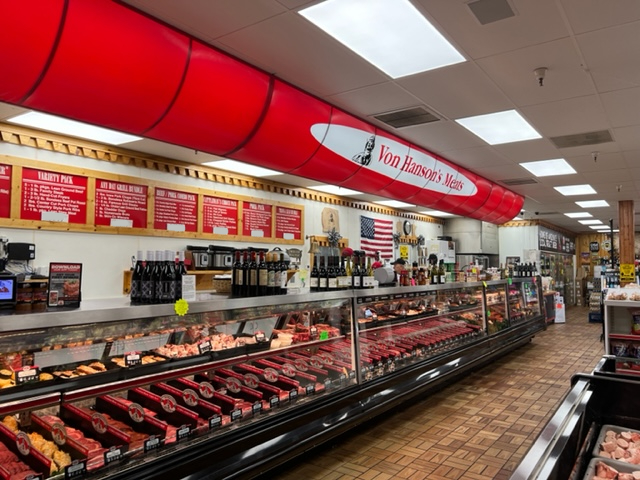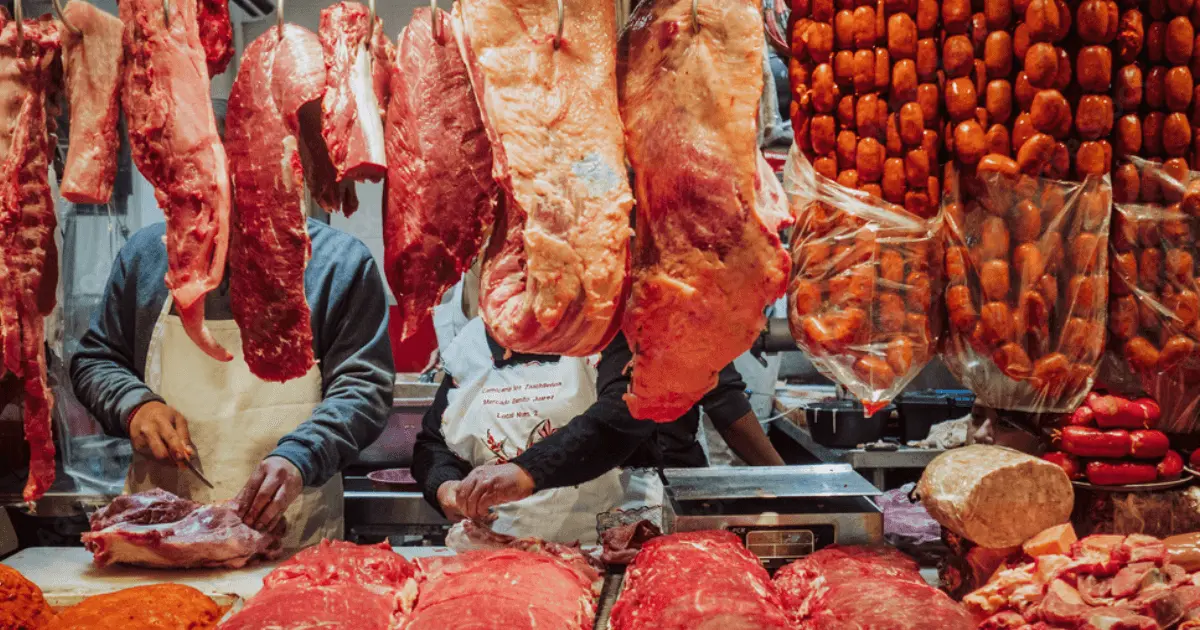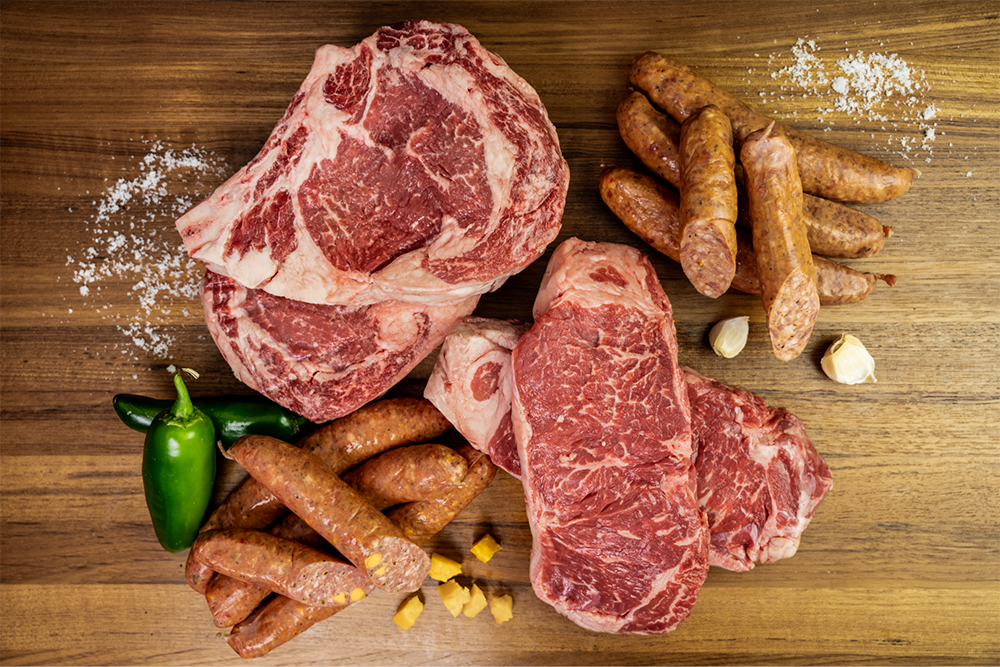Why Citizens Love Bagley Farms Meat Market Edwardsville IL for Their Meat Buying
Why Citizens Love Bagley Farms Meat Market Edwardsville IL for Their Meat Buying
Blog Article
Uncover the Art of the Butcher's Cut in a Modern Meat Market
In the ever-evolving landscape of modern meat markets, the butcher's cut has actually transcended its conventional roots, combining olden workmanship with contemporary techniques. bagley farms meat market edwardsville il. Today's butchers are not merely cpus of meat; they are educated craftsmens who stress sustainability and moral sourcing. Their know-how in choose and preparing cuts customized to certain culinary needs uses an unrivaled eating experience. What really sets the modern-day butcher apart is their ability to build a deeper connection between customers and the origins of their meat. How do these masters equilibrium tradition with development, and what ramifications does this have for the future of meat consumption?
Advancement of Butchery Techniques

The mid-20th century saw butchery methods additionally improved by scientific understandings right into muscle biology and meat aging, enhancing both tenderness and preference. Developments like vacuum product packaging and refrigeration prolonged product shelf-life, enabling butchers to expand offerings and enhance quality assurance. This period additionally noted the surge of customized equipment, such as band saws and meat slicers, which raised precision and performance in meat processing.
Digital systems currently help in tracking animal provenance and maximizing cuts to satisfy specific consumer preferences. Furthermore, a resurgence in artisanal butchery has arised, mixing conventional skills with modern-day expertise to cater to consumers looking for moral and lasting meat choices.

Recognizing Meat Cuts

Understanding the ins and outs of meat cuts is necessary for both butchers and customers seeking quality and value. For butchers, specific cuts show ability and regard for the craft, making certain very little waste and optimum return.
The main classifications of meat cuts consist of primal, sub-primal, and retail cuts. Butchers after that break these down additionally into sub-primal cuts, before finally creating retail cuts available to consumers, like ribeye or tenderloin.
Recognizing muscle mass composition is vital; muscle mass used much more regularly by the pet tend to be tougher and are best fit for slow-moving cooking approaches, while less-used muscular tissues, like those found in the loin, are more tender and ideal for grilling or roasting. Familiarity with these differences Check Out Your URL encourages customers to make educated choices, enhancing their culinary undertakings.
Choosing High Quality Meat
Picking the ideal meat entails even more than simply choosing an aesthetically attractive item from the display. The art of picking top quality meat calls for a critical eye and knowledge of specific features that indicate quality and excellence.
Secondly, take into consideration the marbling, which describes the white flecks of fat within the muscular tissue. Correct marbling is a crucial indication of tenderness and taste, as it thaws during food preparation, boosting the meat's juiciness. Bear in mind, greater marbling typically correlates with exceptional high quality cuts, such as USDA Prime.
Appearance is an additional essential element; meat ought to really feel strong to the touch, not slimy or overly soft. Furthermore, be conscious of the fragrance. Fresh meat should have a discover this tidy, neutral odor, free from any sour or off-putting smells.
Pairing Cuts With Cooking Techniques
Successfully combining cuts of meat with the appropriate cooking methods is essential for accomplishing optimal taste and structure. These techniques boost the meat's natural flavors and make sure a juicy finish.
On the other hand, harder cuts like brisket and chuck roast are abundant in collagen, which damages down into jelly when cooked slowly. These cuts are perfect for braising or slow-moving roasting, enabling the meat to tenderize in time and create deep, complex flavors. In a similar way, cuts such as short ribs and pork shoulder get on well with slow-cooking methods, where expanded cooking times change their durable appearances into succulent dishes.
Lamb shanks and oxtail, which call for extended food preparation to soften, are perfect candidates for cooking or sluggish simmering. These techniques coax out abundant, hearty flavors while maintaining moisture. By comprehending the unique features of each cut, chefs and home cooks alike can boost their cooking developments, ensuring each recipe is both satisfying and remarkable.
The Butcher's Role Today
Navigating the developing landscape of the modern-day meat market, the butcher's role today prolongs beyond simple prep work of cuts. Contemporary butchers are cooking craftsmens, educators, and advocates for lasting methods.
Along with crafting accurate cuts, butchers currently linked here engage directly with consumers, supplying cooking advice and customizing choices to suit specific demands and choices. Their competence in meat aging, marbling, and flavor accounts empowers consumers to make informed choices, enhancing their culinary experiences. This personalized solution exhibits the butcher's developing function as a relied on advisor in the kitchen area.
Moreover, butchers are crucial in lessening waste, using entire pets to produce diverse products such as sausages and stocks - bagley farms meat market edwardsville il. This thorough strategy not just values the pet however also aligns with modern sustainability goals. In this method, the contemporary butcher symbolizes both tradition and innovation, adjusting to an ever-changing market while preserving the artistry and stability of their craft

Conclusion
Proficiency in comprehending diverse meat cuts and top quality indicators equips butchers to offer informed recommendations, lining up details cuts with ideal food preparation approaches. By recognizing historical practices while embracing modern needs, the butcher's function continues to be essential in today's innovative meat market.
Report this page